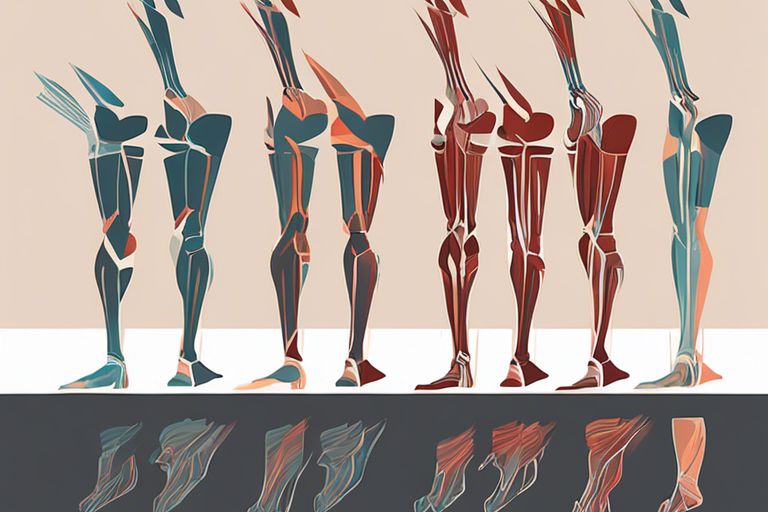Encompassing good posture and walking techniques can significantly impact your overall health and well-being. By incorporating proper walking techniques into your daily routine, you can improve your posture, muscle strength, and joint health. In this blog post, we will explore the specific techniques and tips you can implement to achieve better posture while walking.
Understanding Posture
By making simple adjustments to your walking technique, you can improve your posture and reduce strain on your muscles and joints. Understanding the importance of posture and how it affects your overall health is essential for making these adjustments.
Definition and Significance
Good posture is the correct alignment of body parts supported by the right amount of muscle tension. When you have good posture, your body parts are in balance, and your muscles work efficiently. Good posture is essential for the body to function optimally and reduce the risk of developing musculoskeletal problems.
Common Postural Issues
Postural issues, such as slouching, rounded shoulders, and forward head posture, are common problems that can lead to muscle imbalance and pain. If left unaddressed, these issues can contribute to chronic musculoskeletal problems and affect your overall well-being. Improving your posture can help prevent these common postural issues and their negative consequences on your health and well-being.
Fundamentals of Proper Walking Technique
Now that we’ve established the importance of good posture when walking, let’s delve into the fundamentals of proper walking technique. By understanding and practicing these fundamentals, you can improve your posture, minimize strain on your body, and promote overall wellness.
Body Alignment Basics
When it comes to walking with proper posture, body alignment is crucial. Your head should be up, with your chin parallel to the ground, and your eyes looking straight ahead. Your shoulders should be relaxed and pulled back, rather than rounded forward. Keep your back straight, with your chest lifted and your core engaged. Your hips should be in line with your body, and your knees slightly bent. Maintaining proper body alignment not only improves your posture but also reduces the risk of strain and injury to your muscles and joints.
The Role of Footwear
Another important aspect of proper walking technique is the role of footwear. Your shoes play a significant role in supporting your posture and providing stability as you walk. It’s essential to wear shoes that offer adequate arch support and cushioning, as well as a proper fit. Ill-fitting or unsupportive footwear can lead to a range of issues, including arch pain, heel pain, and even back pain. Additionally, pay attention to the wear and tear of your shoes, as worn-out soles or uneven heel wear can negatively impact your gait and posture. Selecting the right footwear is a crucial component of maintaining proper walking technique and supporting your body’s alignment.
Walking Techniques for Improved Posture
However, walking is not just about putting one foot in front of the other. To improve your posture and reduce back pain, there are specific walking techniques you can use.
Heel-To-Toe Walking
When you walk, make a conscious effort to land on your heel first, then roll through the rest of your foot before pushing off with your toes. This distributes your weight more evenly and helps to align your body properly. Imagine your feet being connected to a straight line and try to follow that line with each step.
Posture-Focused Exercises and Stretches
Incorporating exercises and stretches that focus on your posture can greatly improve the way you walk. Strengthening your core muscles, particularly the muscles of your abdomen and lower back, can help support your spine and promote better posture. Additionally, stretching tight muscles in your hips, legs, and back can help to alleviate any imbalances that may be affecting your gait.
Are there specific walking techniques for better posture?
Implementing Changes in Daily Life
Lastly, let’s discuss how you can implement changes in your daily life to improve your posture through walking techniques. It’s important to remember that consistency and practice are key when it comes to making lasting changes.
Practice and Consistency
In order to see improvements in your posture, you must be consistent with practicing the walking techniques that promote better alignment. This means setting aside time each day to focus on your posture while walking. You can start by consciously reminding yourself to stand tall, with your shoulders back and your chin parallel to the ground. Over time, this will become second nature to you, and you will notice a significant improvement in your posture.
Integrating Techniques at Work and Home
Integrating these walking techniques into your daily routine is essential for maintaining better posture throughout the day. Whether you are at work or at home, be mindful of your posture while walking. You can also make small adjustments, such as choosing to take the stairs instead of the elevator or walking around the office during breaks. By incorporating these techniques into your daily activities, you will be able to reinforce the positive changes in your posture and overall well-being.
By practicing these walking techniques consistently and integrating them into your daily routine, you will be able to see a noticeable improvement in your posture. Remember that making these changes requires dedication and effort, but the long-term benefits are well worth it. Improved posture can have a positive impact on your overall health and well-being, reducing the risk of musculoskeletal issues and improving your confidence and appearance. Keep striving to maintain good posture, and you will reap the rewards in the long run.
Conclusion
So, remember that maintaining good posture while walking is vital for your overall spinal health and body alignment. By implementing specific walking techniques such as engaging your core muscles, keeping your shoulders relaxed and back, and maintaining a natural heel-to-toe gait, you can improve your posture and prevent common issues such as back pain and muscle strains. Additionally, paying attention to your body and making small adjustments throughout the day can go a long way in improving your overall posture and well-being. By incorporating these techniques into your daily routine, you can make significant strides towards better posture and overall health.




